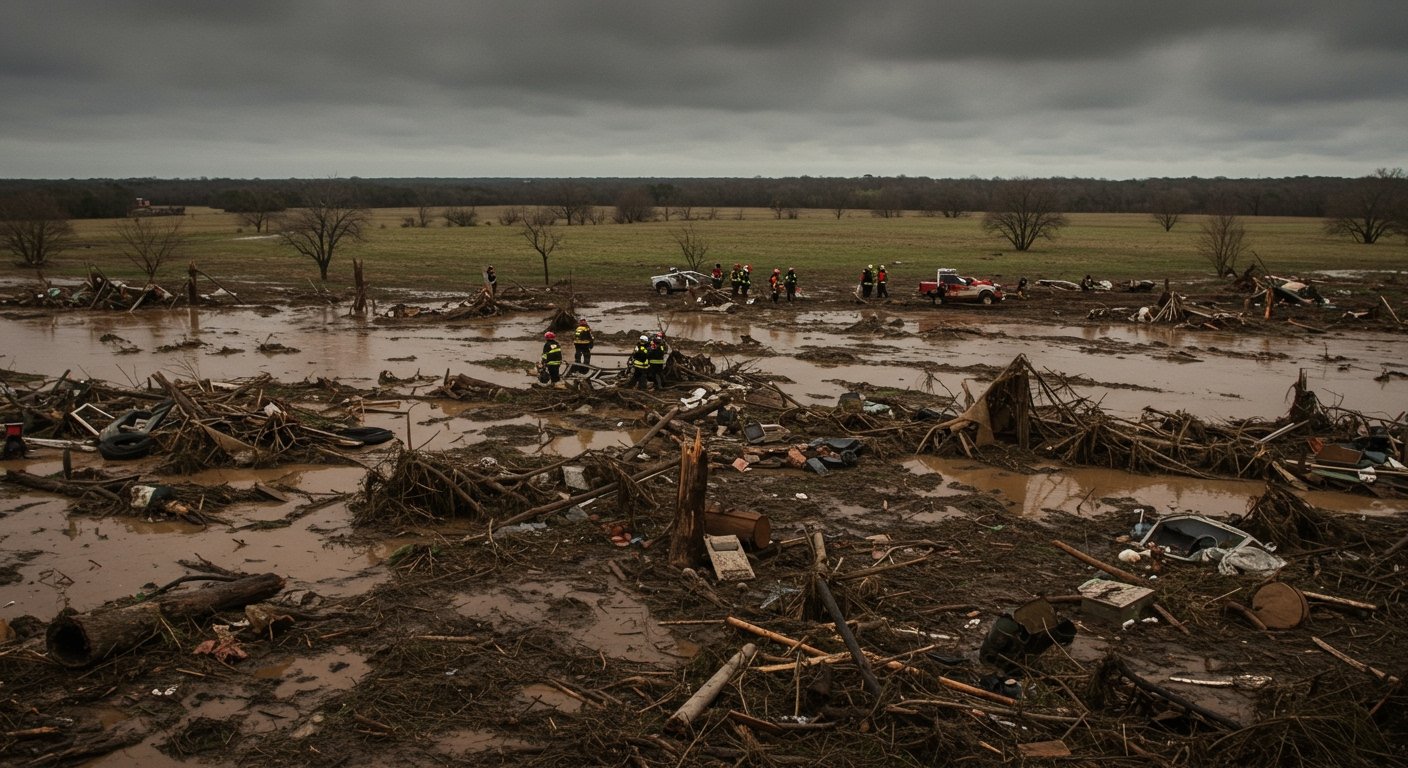Kerr County, Texas – Central Texas is grappling with the devastating aftermath of catastrophic flash floods that have tragically claimed the lives of nearly 70 people as of Sunday, July 6, 2025. The vast majority of fatalities, 59 to date, have occurred in Kerr County within the state’s scenic Hill Country region.
The grim toll includes dozens of children who were attending summer camps along the banks of the Guadalupe River when the unprecedented waters swept through the area. Authorities in Kerr County have confirmed 38 adult deaths and 21 child deaths within their jurisdiction. Additional fatalities have been reported in neighboring Travis, Burnet, and Kendall counties, contributing to the mounting statewide count.
Search Efforts Intensify Amidst Debris
The focus of desperate search operations remains on locating 11 campers and a camp counselor who are still unaccounted for. Rescue teams are navigating treacherous conditions, including fields strewn with broken trees, submerged and overturned vehicles, and vast amounts of debris, complicating efforts to reach affected areas and potentially find survivors or recover victims.
The disaster unfolded with terrifying speed. On Friday before daybreak, the Guadalupe River, usually a popular spot for recreation, experienced an astonishing surge. The river’s level rose a staggering 26 feet in just 45 minutes, transforming placid waters into a destructive torrent that ripped homes from their foundations and swept away vehicles.
‘Flash Flood Alley’ Living Up to its Name
Central Texas is notoriously situated within a region often referred to as “flash flood alley” due to its susceptibility to rapid, intense rainfall and subsequent flooding. However, even seasoned residents and emergency officials were caught off guard by the sheer intensity and precise timing of this particular event.
While warnings had been issued by the National Weather Service beginning on Thursday, the ferocity of the downpour that triggered the flash flood surpassed expectations. Authorities have stated that they did not anticipate rainfall of such severity in such a short period.
Summer camps operating in the popular Hill Country area reacted with varying degrees of preparedness. Mo-Ranch Camp, located further downstream, successfully moved its campers to higher ground in anticipation of rising waters. Other facilities, including Camps Rio Vista and Sierra Vista, were reportedly monitoring weather conditions but had concluded their sessions for the week on Thursday, just hours before the most destructive phase of the flood began.
Widespread Destruction and Rescue Operations
The floodwaters left a trail of destruction across multiple counties. Homes were splintered or completely destroyed, roads were washed out, and the landscape was dramatically altered by the force of the water. The initial 36 hours of the disaster saw extraordinary efforts by first responders and volunteers, resulting in the rescue of over 850 people who were stranded by the sudden inundation.
As the floodwaters begin to recede in some areas, the full scale of the humanitarian crisis and property damage is becoming clearer. The focus is now shifting from immediate rescue to recovery operations and the painstaking search for those still missing. The community, alongside state and federal agencies, is mobilizing resources to provide aid to the thousands displaced and affected by this catastrophic natural disaster.
The tragedy serves as a stark reminder of the power of nature and the persistent risks faced by communities in regions prone to flash flooding, underscoring the importance of rapid response systems and public awareness campaigns in vulnerable areas like Central Texas.






